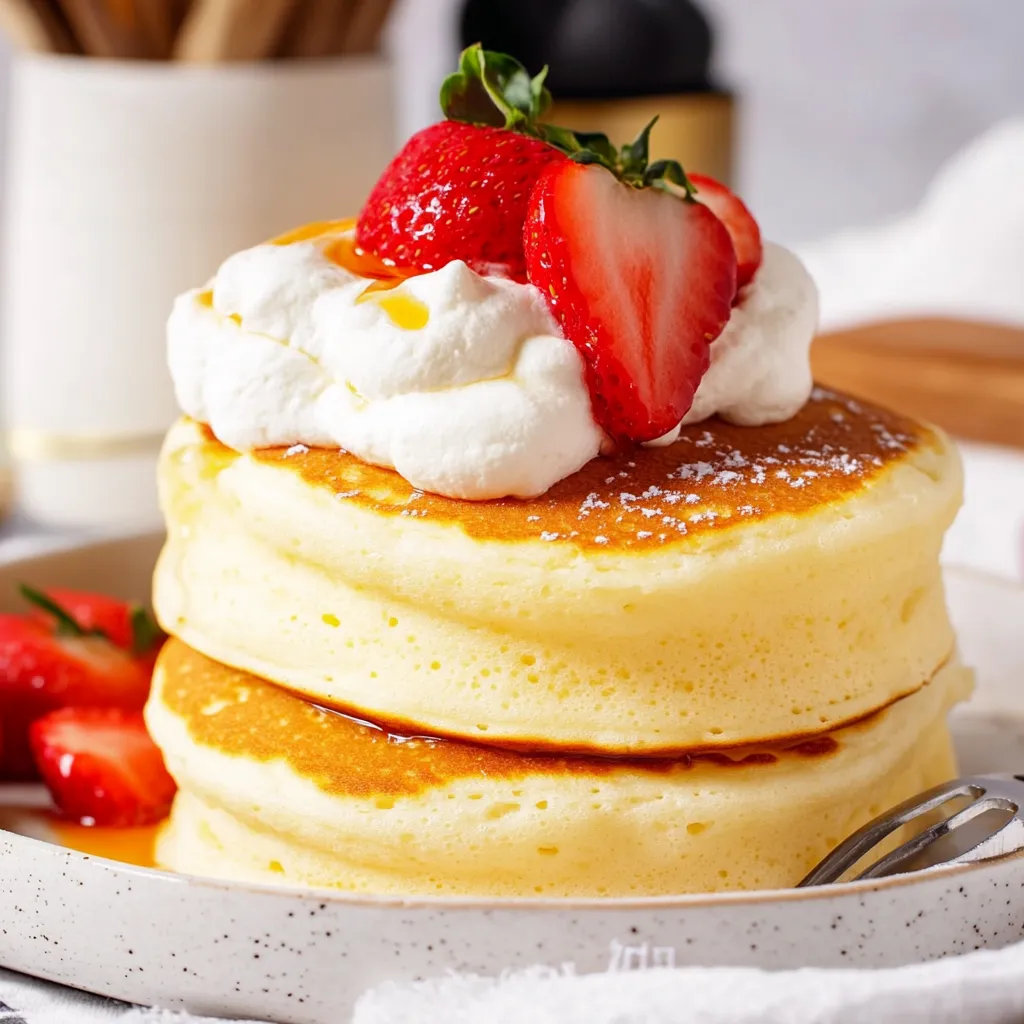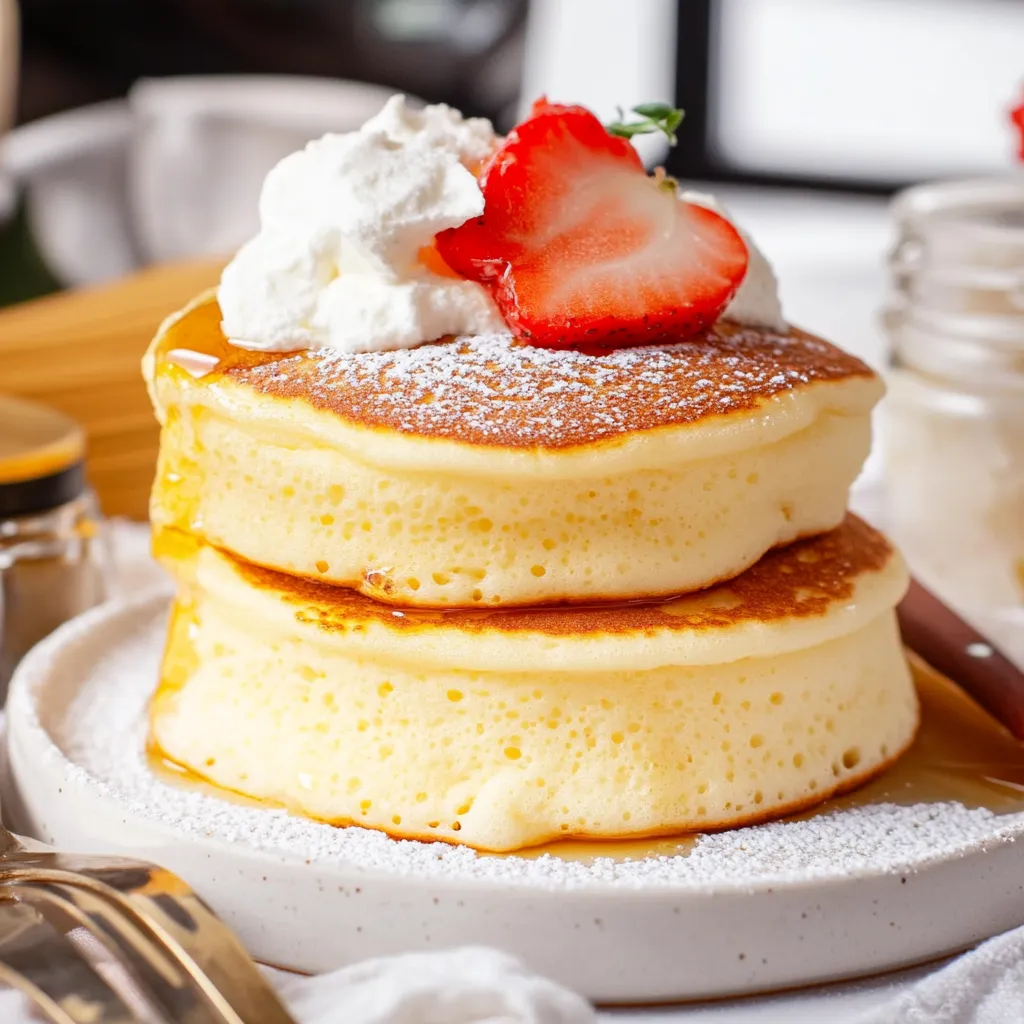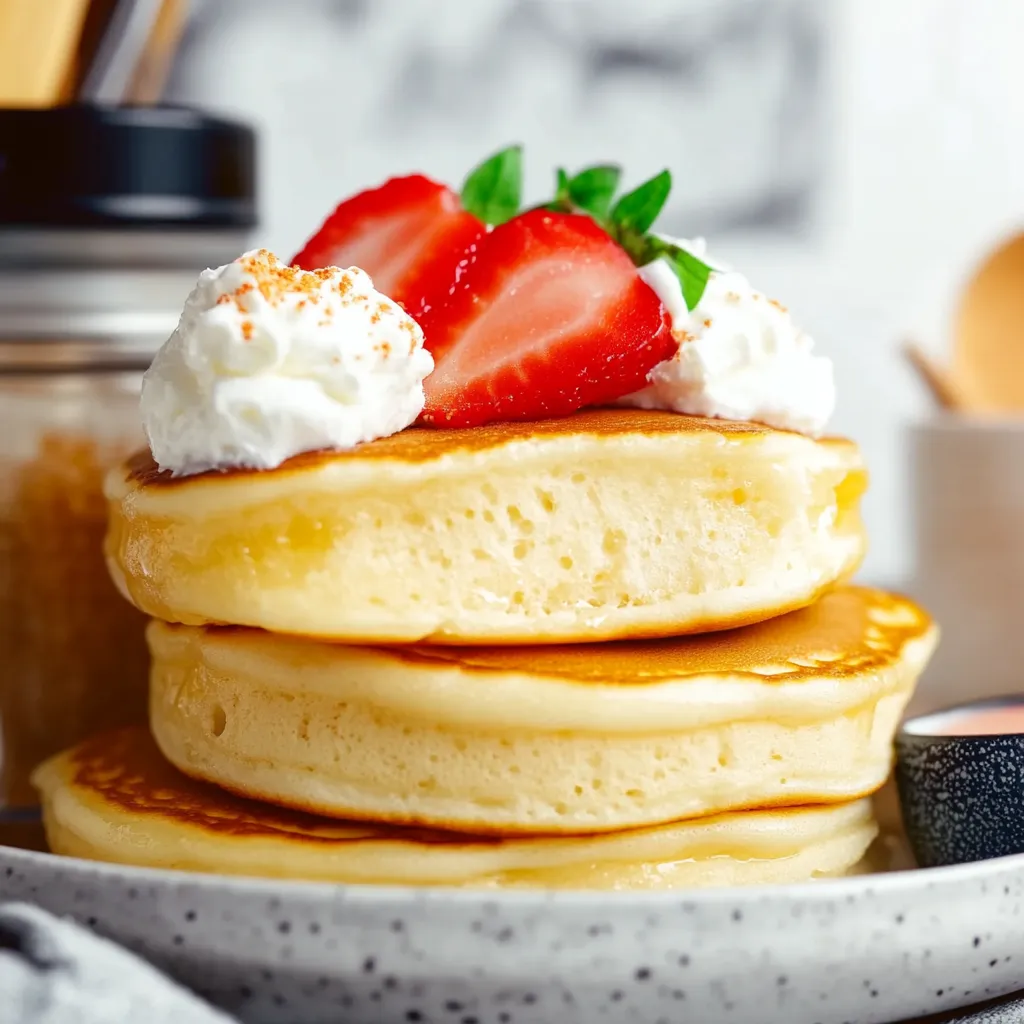 Pin it
Pin it
These fluffy Japanese cloud pancakes turn an everyday morning meal into a stunning food adventure. Different from regular flat flapjacks, these airy treats stand tall with their famous wobble while staying incredibly soft with a melt-in-your-mouth feel that's made them popular around the globe.
I tried making these during a random weekend breakfast, and my whole family couldn't take their eyes off the pan as they cooked. That gentle bounce when they landed on the plate instantly changed our boring breakfast routine into something magical that we now make whenever we want to create special morning memories.
Ingredients
- Large eggs: The backbone for building the airy structure that helps these pancakes reach impressive heights
- Milk: Brings needed wetness while keeping the mix creamy
- Vanilla extract: Adds cozy, classic flavor depth
- Lemon zest: Not required but brings a fresh kick that works well with the sweetness
- All-purpose flour: Creates support while keeping things light; remember to scoop and level for the right amount
- Baking powder: Gives extra height beyond what the whipped eggs provide
- White vinegar or lemon juice: Helps the egg whites form better peaks
- Granulated sugar: Adds sweetness and builds a strong whipped egg structure
- Neutral oil: Such as canola or vegetable helps stop sticking without adding competing tastes
Simple Cooking Guide
- Getting The Eggs Ready:
- Split egg whites from yolks into two separate bowls making sure no yolk gets into the whites because even a tiny bit of fat will ruin your fluffy mixture.
- Making The Main Mix:
- Mix egg yolks with milk, vanilla, and lemon zest stirring gently until blended. Add flour and baking powder through a sieve to catch lumps. Stir until smooth but don't mix too much or your pancakes might get tough.
- Building The Fluffy Part:
- Put vinegar in the egg whites then start beating with an electric mixer at medium speed until foamy. Slowly add sugar bit by bit letting each addition mix in fully. Turn up to medium-high speed and keep going until whites stand up when you lift the beater.
- Combining Everything:
- Put a third of the fluffy whites into the yolk mixture using a wide rubber spatula, cutting down the middle then gently scooping under and over. Add the rest of the whites in two more batches using the same gentle motion until no white streaks show but the mix stays puffy.
- Pan Cooking:
- Warm a nonstick pan on very low heat, super important for proper rising without burning, with just enough oil to thinly coat the bottom. Carefully spoon batter keeping mounds high for that signature look. Cover right away with a lid creating a mini steam oven that helps them rise.
- Turning Them Over:
- After about 7-8 minutes when the bottom looks golden and they've set up, use two spatulas to carefully flip each pancake trying to keep their height. Put the lid back on and keep cooking at the same low temp until the middle is fully cooked.
 Pin it
Pin it
These cloud-like treats remind me of my visit to a small pancake shop in Tokyo where I watched in wonder as the cook made these delicate towers so carefully. The taste of that first bite pushed me to learn this method at home and now they've become our family's Saturday morning tradition.
Mastering Whipped Egg Whites
Getting your whipped egg whites just right is key to amazing cloud pancakes. Start with eggs left out to reach room temp as they whip up better than cold ones. Adding a bit of acid like vinegar or lemon juice helps the proteins stay stable so you can trap more air without deflating. When beating the whites, watch what they look like instead of just timing it. Soft peaks fold over when lifted while stiff peaks stand up with just the tips slightly bent. Your egg whites should feel smooth between your fingers, not gritty, which means the sugar has completely mixed in.
Fixing Common Problems
If your pancakes sink fast, you probably didn't beat the egg whites enough or mixed too roughly when combining everything. For pancakes that get too brown before cooking through, turn down the heat more and make sure the pan stays covered while cooking. If they come out too heavy, check that your baking powder isn't old. When pancakes seem too wet inside, let them cook a few minutes longer keeping the heat very low. Weather matters too as humid days can make egg whites less stable, so you might need to adjust your technique when it's really damp outside.
Ways To Serve
These dreamy pancakes deserve to be shown off nicely. Serve them right away since they start to sink a bit as they cool. Put them on warm plates and top with lightly sweetened whipped cream that gets a bit melty on the warm surface. Fresh berries especially strawberries, blueberries or raspberries add great color and tangy flavor. A light sprinkle of powdered sugar looks pretty while a small drizzle of real maple syrup or honey adds sweetness without taking over. For special days, try adding edible flowers or a sprinkle of matcha powder for a true Japanese touch.
 Pin it
Pin it
Make your breakfast something to remember with these airy, soft cloud pancakes — they'll be the talk of the table any day of the week.
Frequently Asked Questions
- → Why did my soufflé pancakes deflate?
Your pancakes might sink if you mixed the meringue too roughly, breaking all those tiny air bubbles that make them fluffy. Too much heat or peeking under the lid too many times can also make them fall flat. For best results, fold very gently and keep the heat low without lifting the lid too often.
- → Can I make the batter ahead of time?
It's not a good idea to prep the batter early. The whipped egg whites will start to sink, and you'll lose all those important air bubbles that create the fluffy texture. For the best outcome, mix everything right before cooking and serve them hot off the pan.
- → What's the difference between regular pancakes and soufflé pancakes?
Normal pancakes use a basic batter with baking powder for lift, but soufflé pancakes rely on beaten egg whites for their amazing height and light texture. They also need slower cooking at lower temps under a lid to help them grow tall properly.
- → Why do my pancakes need to be cooked covered?
The lid traps steam that helps your pancakes rise evenly throughout. This trapped warmth makes sure the eggs inside set up right before the outside gets too brown, giving you tall puffy pancakes in the end.
- → How do I know when my egg whites have reached stiff peaks?
Your egg whites are ready when they point straight up after lifting your beaters. The mix will look shiny and stay firmly in place. Try flipping your bowl upside down as a test. If they're whipped right, nothing will fall out.
- → Can I use a substitute for eggs in this recipe?
Sadly, egg replacers just don't work well here. Only real egg whites can form the special meringue that gives these pancakes their unique fluffiness and height. The recipe really needs actual eggs for the right structure.
